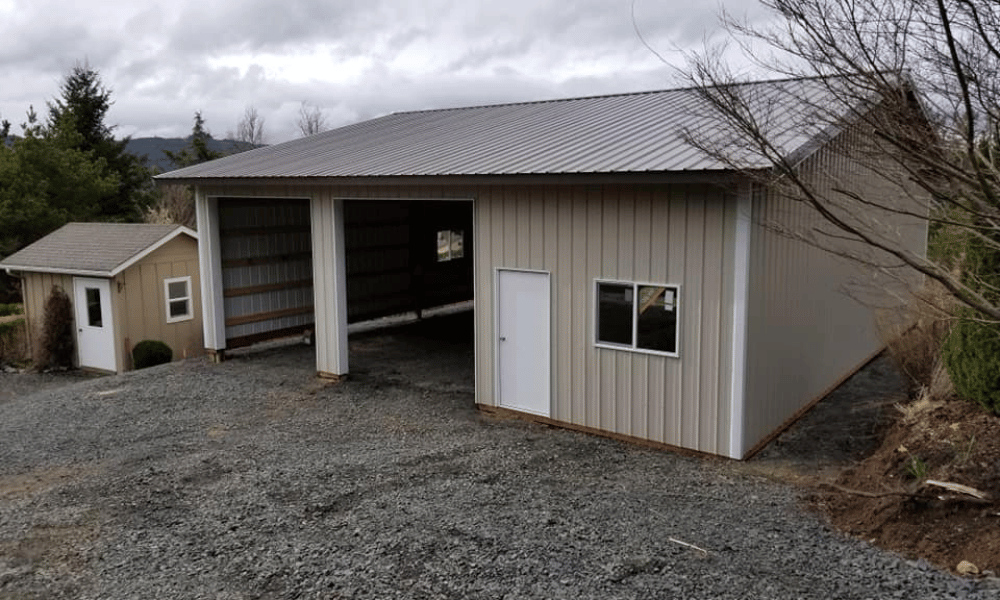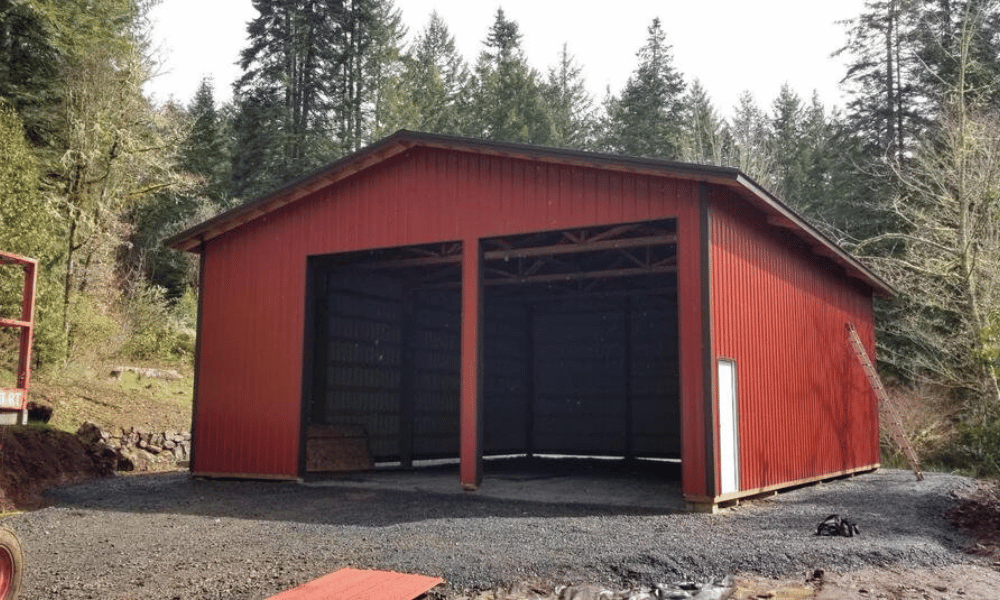Introduction
In the ever-evolving landscape of agriculture, farmers face numerous challenges that require innovative solutions. One such solution is investing in pole buildings, which have become increasingly popular for their cost-effectiveness, versatility, and efficiency. This article will explore the various aspects of financing your farm’s future through strategic investments in pole buildings. From understanding what pole buildings are to examining financing options available for farmers, we aim to provide comprehensive insights that empower you to make informed decisions for your agricultural enterprise.
What Are Pole Buildings?
Definition of Pole Buildings
Pole buildings, also known as post-frame structures, are a type of construction that utilizes large wooden posts or steel columns as the primary support. These posts are typically embedded in the ground or set on concrete footings. The design allows for open interior spaces without the need for load-bearing walls, making them ideal for various agricultural applications.
Benefits of Pole Buildings
Investing in pole buildings offers numerous benefits:
- Cost-Effectiveness: Compared to traditional building methods, pole buildings can significantly reduce material and labor costs. Flexibility: The open floor plan allows customization for storage, livestock housing, equipment maintenance, or even retail space. Durability: Built to withstand harsh weather conditions, pole buildings demonstrate longevity and resilience.
Common Uses of Pole Buildings on Farms
Farmers utilize pole buildings for a variety of purposes:
- Equipment storage Livestock shelters Grain storage Workshops Retail spaces
The versatility of these structures makes them an attractive option for modern agricultural operations.
Financing Your Farm’s Future: Understanding Your Needs
Assessing Your Agricultural Goals
Before diving into financing options for pole buildings, it’s essential to assess your agricultural goals. Are you looking to expand your current operations? Do you need additional storage space? Understanding your specific needs will help you determine how much funding you'll require.

Calculating Costs Associated with Pole Buildings
When considering financing options, it's crucial to have a clear understanding of the costs involved in constructing a pole building:
| Item | Estimated Cost | |------------------------------|----------------------| | Site Preparation | $1 - $5 per sq ft | | Materials (posts & siding) | $10 - $20 per sq ft | | Labor Costs | $4 - $10 per sq ft | | Roofing | $2 - $5 per sq ft | | Insulation | $1 - $3 per sq ft |
Having a detailed budget will not only guide your financing discussions but also ensure that you're prepared for any unforeseen expenses.
Financing Options Available for Farmers
Traditional Bank Loans
One of the most common ways to finance a new building is through conventional bank loans. These loans typically offer lower interest rates but may require collateral and thorough credit checks.
Pros and Cons
Pros:
- Lower interest rates compared to alternative financing. Clear repayment terms with structured schedules.
Cons:
- Lengthy approval process. Strict lending criteria might limit accessibility.
Government Grants and Programs
Many governments offer grants and loan programs specifically designed for farmers looking to invest in infrastructure improvements. These can sometimes cover up to 50% of project costs.
Examples
USDA Rural Development Programs: Offers various types of loans and grants. State Agricultural Grants: Each state has unique programs supporting local farmers.Private Investors and Partnerships
Another option is seeking https://pastelink.net/ze1xz01y private investors or forming partnerships with fellow farmers or businesses interested in co-investing in pole building projects.
Advantages
- Shared financial responsibility reduces individual risk. Access to broader networks can lead to additional resources or expertise.
Choosing the Right Location for Your Pole Building
Factors Influencing Location Selection
When planning your new structure, consider these factors:
Accessibility: Ensure that trucks and equipment can easily reach the site. Drainage: Proper drainage is crucial in preventing water accumulation around the foundation. Zoning Regulations: Check local zoning laws to ensure compliance before construction begins.Design Considerations for Your Pole Building
Customizing Your Structure's Layout
When it comes to designing your pole building, flexibility is key. Custom layouts can cater specifically to your operational needs—whether that be livestock space or machinery storage.
Space Efficiency Tips
Create dedicated zones within the structure (e.g., work areas vs. storage). Use vertical space efficiently by incorporating shelving systems.Sustainability Practices When Building Pole Structures
Incorporating Green Building Techniques
Investing in sustainable practices not only benefits the environment but may also attract funding opportunities aimed at eco-friendly initiatives.
Techniques Include:
Using recycled materials where possible. Installing solar panels on roofs for energy efficiency.Insurance Considerations When Investing in Pole Buildings
Types of Insurance Coverage Needed
When investing significant resources into constructing a new building, securing adequate insurance coverage is paramount:
General Liability Insurance Property Insurance Crop InsuranceUnderstanding what types of coverage are necessary will protect your investment from unforeseen incidents.
Maintaining Your Pole Building Over Time
Regular Maintenance Practices
To maximize the lifespan of your investment, regular maintenance is essential:
Inspect roofing annually. Treat wooden components with preservatives every few years.Implementing a scheduled maintenance plan ensures that minor issues are addressed before they escalate into costly repairs.
Financing Your Farm’s Future: How Much Should You Invest?
Evaluating Return on Investment (ROI)
When contemplating how much money you should allocate toward constructing a pole building, evaluating ROI is critical:
Analyze potential revenue increases from improved operations. Factor in long-term savings associated with reduced labor costs due to increased efficiency.A thorough assessment will help justify your investment decision when discussing financing options with lenders or investors.
FAQ Section
Q1: What are the advantages of using pole buildings over traditional structures?

Q2: How do I finance my new pole building project?
A2: There are several avenues available including traditional bank loans, government grants specifically geared towards farmers, private investments, and partnerships among local agribusinesses.
Q3: Can I customize my pole building design?
A3: Absolutely! One great advantage of pole buildings is their adaptability; you can tailor both layout and materials according to your specific needs and preferences.
Q4: What kind of maintenance do pole buildings require?
A4: Regular inspections focusing on roofing integrity, treating wooden elements against pests or decay every few years will prolong its lifespan significantly.
Q5: Is insurance necessary when investing in a new structure?
A5: Yes! Protecting this significant investment through adequate insurance coverage like general liability or property insurance is vital against potential risks associated with farming operations.
Q6: How do I calculate if this investment will be beneficial?
A6: Evaluating return on investment (ROI) involves analyzing projected revenue increases alongside cost-saving efficiencies resulting from improved infrastructure capabilities over time.
Conclusion
Investing in pole buildings represents an intelligent strategy aimed at enhancing operational efficiency while securing financial stability within agriculture's evolving landscape. By understanding various financing options available—be it through traditional loans or government grants—farmers can make informed choices tailored toward their individual circumstances and operational goals.
Through careful consideration of location selection alongside sustainable practices during construction phases coupled with robust maintenance plans post-completion; these investments not only improve productivity but also contribute positively towards long-term sustainability efforts within farming communities at large!
In summary—invest wisely! The future success of your farm may very well hinge upon utilizing innovative solutions like those offered by investing strategically into durable yet versatile structures such as pole barns!